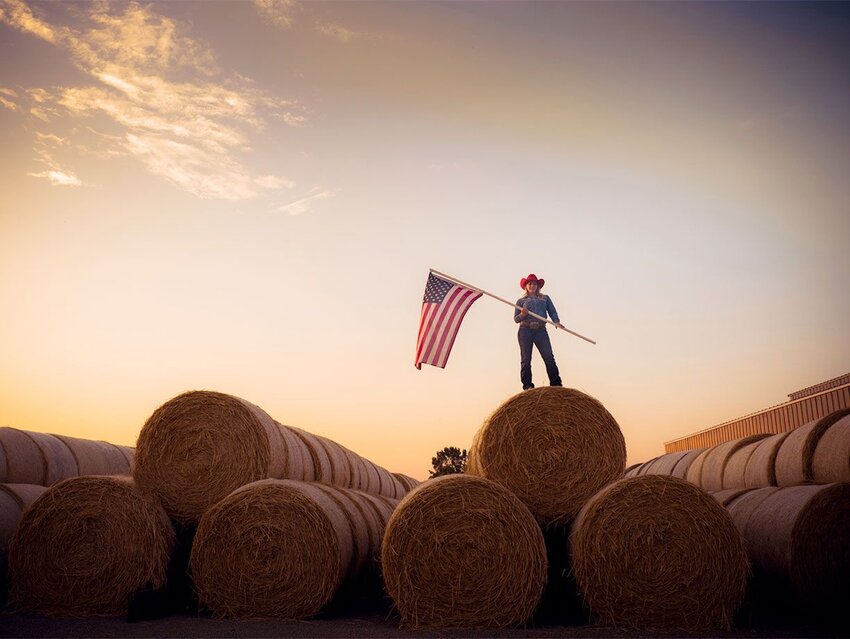All around the United States, regional nicknames have become ingrained in our geography. These monikers are based on various common elements, whether it be economic, political, environmental, or social, and can even stick around after their origins are no longer relevant. Many of these regions are referred to as a “belt,” such as the “Sun Belt,” a colloquial term for the stretch of Southern states that get the most sunshine and warm weather year-round. Other regions have less obvious monikers, such as the "Breadbasket" or the "Salad Bowl," begging the question, where do these nicknames come from? Here are seven regional nicknames you might have heard over the years, and exactly where in the U.S. they’re located.
Breadbasket
Also known as America’s Wheat Belt or Corn Belt, the “Breadbasket” is a nickname for the greater Midwest region, from the Dakotas to the Great Lakes. Located at the heart of the United States, this area is aptly nicknamed for its rich soil and optimal farming conditions for wheat and other grains. The U.S. isn’t the only country with a breadbasket — the term is used in many regions around the world to describe fertile, grain-producing land.
Snow Belt
While plenty of states see seasonal snowfall, the Great Lakes Region takes home the title of the “Snow Belt.” What makes the snow in this region so special? Thanks to the Great Lakes, the area gets frequent winter storms as part of a phenomenon called lake-effect snow. These massive bodies of water — Superior, Michigan, Huron, Erie, and Ontario — tend to stay warmer than the land during the wintertime, causing a lot of precipitation. Year after year, this region receives some of the highest snow accumulation in the country.
Bible Belt
The Bible Belt is an area of the southeastern U.S. where Christian Protestantism is the prominent religion, specifically the Southern Baptist and Methodist denominations. The general area extends from Texas in the west all the way to the East Coast, and as far north as Virginia. Here, church life plays a greater role in society and politics than in other regions of the country. The term was coined in 1924 by journalist H.L. Mencken in a critique of Christian Fundamentalism, but the Bible Belt moniker can also be used as a point of pride in the region’s strong Christian values.
Salad Bowl
The Salinas Valley near California’s central coast is touted as the “salad bowl of the world” thanks to its prosperous agricultural industry. The climate is perfect for crop growing, from world-renowned vineyards to a whopping 70 percent of the nation's lettuce supply. The valley extends from Monterey Bay in the north, southeast along the Salinas River, ending just before Paso Robles. The river is a crucial part of the ecosystem here, providing farms with much-needed water during the dry season.
Rust Belt
“Rust Belt” describes the region of the U.S. that was once dominated by the coal, steel, and manufacturing industries, stretching from New York state to the Midwest. This region was an industrial hub up until the 1970s when it saw a steep decline in business that resulted in thousands of factories being abandoned and rusted, gaining the region its unflattering nickname. Some of these cities have made a turnaround by focusing on new avenues of business, such as the healthcare and technology industries. Prominent Rust Belt cities include Buffalo, Cleveland, Detroit, Toledo, Pittsburgh, and Milwaukee.
Research Triangle
Located in North Carolina, the Raleigh-Durham-Chapel Hill area is referred to as the “Research Triangle of the U.S.” because of its proximity to three Tier-1 research universities — Duke, UNC at Chapel Hill, and North Carolina State — and its establishment as a biotechnology hub. Founded in 1959, a 7,000-acre research park (yes, shaped like a triangle) is home to thousands of companies, making it the largest technology research park in North America today.
Silicon Valley
Silicon Valley hugs the southern region of the San Francisco Bay area. Its name came about during the mid 20th century as an influx of computer and technology companies sprung up in the area. But why silicon? It was the base material for the semiconductors in the circuits of these early computers. Today, rather than manufacturing, the region is known for its marketing, research, and development of computer technologies, notably at Apple, Alphabet (Google) and Meta (Facebook).
Featured image credit: diane555/ iStock

